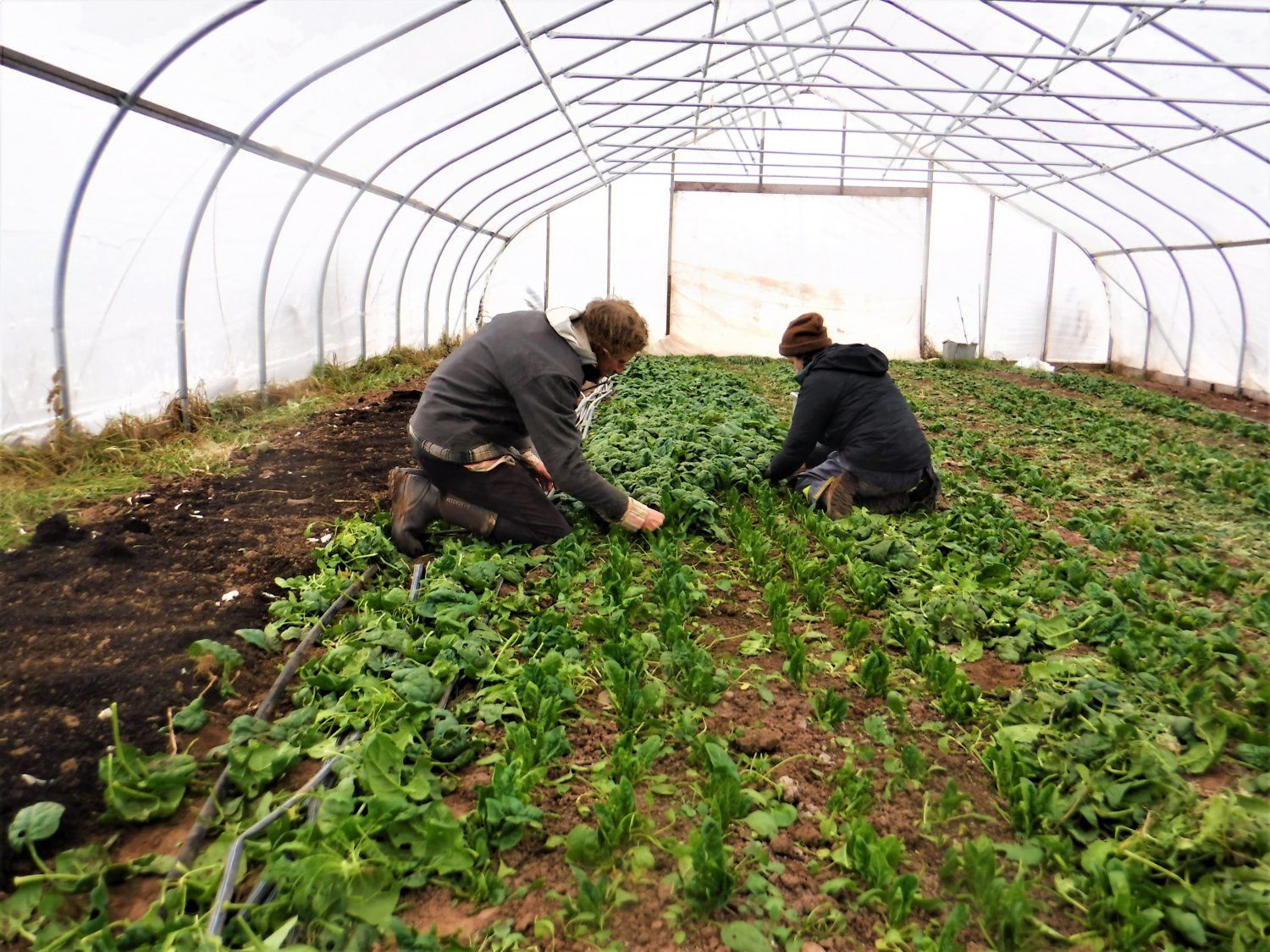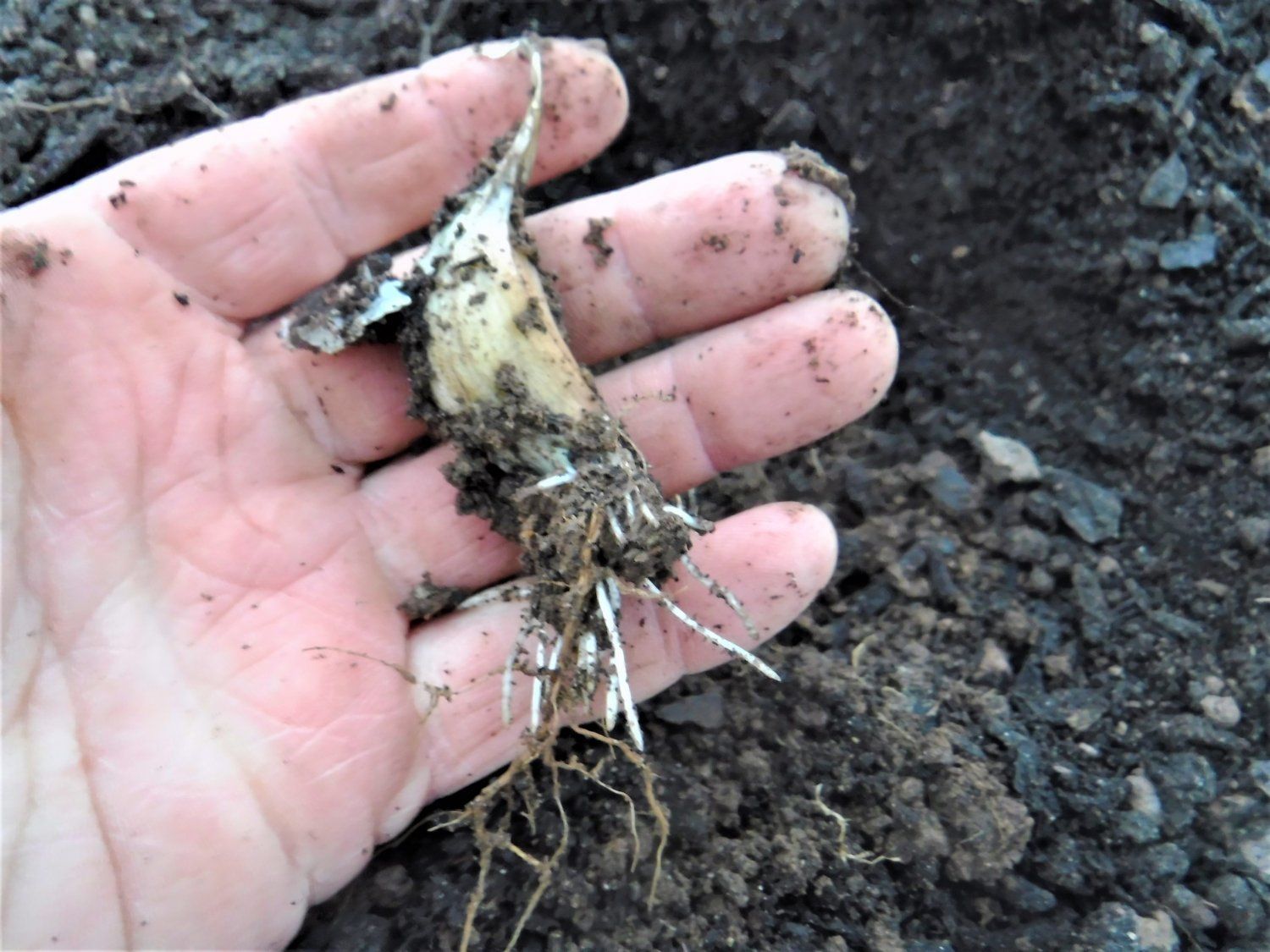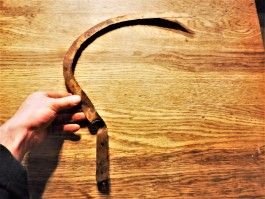It's a winter wonderland out there, and this farmer approves. Once the snow is here to stay, our family enjoys getting out for some cross country skiing. We feel incredibly lucky to live in a place where folks come from miles around - from all over the world - for some of the best cross country skiing the US has to offer. We have run into all kinds of folks out on the trails, from the US Men's Nordic National Team (practicing HERE! all the way from Colorado) to several Olympic competitors who were out training, not to mention all the great local folks we exchange smiles and nods with as we pass on the trail.
Other than in our microgreen room, most things here at the farm are in stasis now, waiting for warmer temps and sunshine to bring them back to life. The storage crops sit patiently in the cool, dark of the root cellar, and I am annually amazed at how well these crops hold in what is essentially a "modernized" hole in the ground.
Each week farmers Ryan, Alex, and I grab our headlamps and trek through the woods out to the cellar to pack your carrots, cabbage, and NOW BEETS from the cellar. When it comes time to bring them in to our Cooperative packing building, we load them in a sled, covered with warm quilts to keep them from freezing, and haul them to the truck waiting in the driveway.
Sometimes in agriculture the old ways of doing things still do the job just fine... but I as much as I like horses I am glad to bring things in to town in a heated pickup truck instead of in a horse drawn wagon!
Other times, like when I discovered an old sickle this fall, I am amazed at how much perseverance and determination our farming ancestors had.
As you are well aware, fall is a busy time on any farm. Our pre-winter to-do list seems endless, and we're racing to check things off before the cold settles in and our season is over whether we like it or not.
This fall, it was hard to make time to mow down our cover crop of oats and peas. With so many crops to harvest, it seemed silly to spend time mowing down our cover crop that was meant to die when the cold temps arrived anyway, a crop destined not for harvest but to rot and build the soil. However, the grain on the oats was actually beginning to ripen courtesy of the warm fall we were having, and if left uncut it would likely reseed itself and become a weed problem of it's own where we had planted it.
So, I begrudgingly made time to mow it all now instead of finding a LOT of time later to weed all of the sprouting oats from our veggie crops. "It's easier to keep up than catch up" I reminded myself.
Mowing the oats and peas took about half of a day - we had several fields of oats and peas that needed mowed, and they were so tall and lush that I had to go slow so our mower wouldn't get bogged down. When I was nearly finished with the final field, a 3.5 acre chunk of a much larger 60 acre field, I noticed a funny C shape in the soil. I hopped off the tractor to investigate, and found this old rusty sickle just beneath the soil, the wooden handle long rotted away.
Sickles (and their long-handled counterpart the scythe) were used to hand harvest grain many years ago. In the 1870's, a horse drawn reaper-binder was developed by a man from Wisconsin that would harvest the grain AND bind it into shocks (bundles) that could be stacked in the field to finish drying down. Once dry, the farmers would come by with a horse and wagon, fork the bundles onto the wagon, and take them back to thresh. Originally, shocks were threshed (the grain beaten out of the stalks of straw) by laying them out on the barn floor and walking horses all over them (or beating them with a wooden flail). Later, the threshing machine came along - interestingly it was developed before the grain binder mentioned above - to separate the grain from the straw mechanically.
As the tractor idled behind me and I held this small sickle in my hand, I could not help but think of what it would have felt like cutting this small 3.5 acre plot of oats by hand with this sickle. Heck, this field is 60 acres in size, so who knows how much of it was actually planted to grain and being hand harvested with this sickle... Regardless of the size of the planting, hand harvesting grain means being bent over or crawling, waist deep in an ocean of grain, having nothing to cut it with but this tiny tool. It would have been days of work for multiple people - back then, a person could cut about a third of an acre of grain with a sickle in a 10-12 hour day of work. Suddenly, taking a few hours to cut all these oats with the tractor and mower didn't seem so bad...
I hopped back on the tractor, now grateful to finish the job so quickly, and get back to checking some more projects off of my list before winter arrived. Isn't it amazing what a little perspective can do?
That's it from the farm this week. Take good care, and don't forget to temper "the hustle and bustle" of the season with some perspective from time to time. At least you don't have to harvest a field of oats with a sickle!
In community,
Farmer Chris
Great Oak Farm


.JPG)



